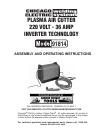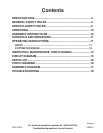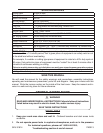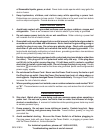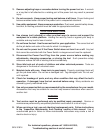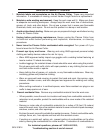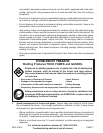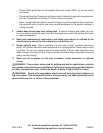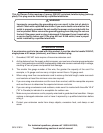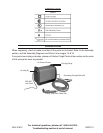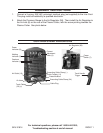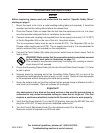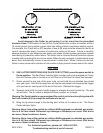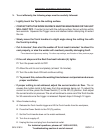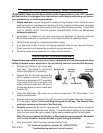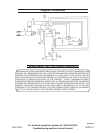
For technical questions, please call 1-800-444-3353;
Troubleshooting section at end of manual.
SKU 91814 PAGE 7
not possible, designate someone to serve as a fire watch, equipped with a fire extin-
guisher, during the cutting process and for at least one half hour after the cutting is
completed.
• Do not cut on materials having a combustible coating or combustible internal structure,
as in walls or ceilings, without an approved method for eliminating the hazard.
• Do not dispose of hot slag in containers holding combustible materials. Keep a fire
extinguisher nearby and know how to use it.
• After cutting, make a thorough examination for evidence of fire. Be aware that easily
visible smoke or flame may not be present for some time after the fire has started. Do
not weld or cut in atmospheres containing dangerously reactive or flammable gases,
vapors, liquids, and dust. Provide adequate ventilation in work areas to prevent ac-
cumulation of flammable gases, vapors, and dust. Do not apply heat to a container
that has held an unknown substance or a combustible material whose contents, when
heated, can produce flammable or explosive vapors. Clean and purge containers
before applying heat. Vent closed containers, including castings, before preheating,
welding, or cutting.
• Only use compressed air to operate the Plasma Cutter. Never use other compressed
gases.
8.
Inhalation Hazard
Welding Produces TOXIC FUMES and GASSES.
Exposure to welding gasses can increase the risk of developing
certain cancers, such as cancer of the larynx and lung cancer.
Also, some diseases that may be linked to exposure to welding gasses
or fumes are:
• Early onset of Parkinson’s Disease • Heart Disease
• Damage to the reproductive organs • Ulcers
• Inflammation of the small intestine or stomach • Kidney damage
• Respiratory diseases such as emphysema, bronchitis or pneumonia
Safety precautions, such as using natural or forced air ventilation and
wearing an ANSI-approved respirator, are ESSENTIAL to reduce the risk
of developing the above illnesses.
Avoid overexposure to fumes and gases. Always keep your head out of the fumes.
Do not breathe the fumes. Use enough ventilation or exhaust, or both, to keep fumes
and gases from your breathing zone and general area.
• Where ventilation is questionable, have a qualified technician take an air sampling to
determine the need for corrective measures. Use mechanical ventilation to improve
air quality. If engineering controls are not feasible, use an approved respirator.
• Work in a confined area only if it is well ventilated, or while wearing an air-supplied
respirator.



